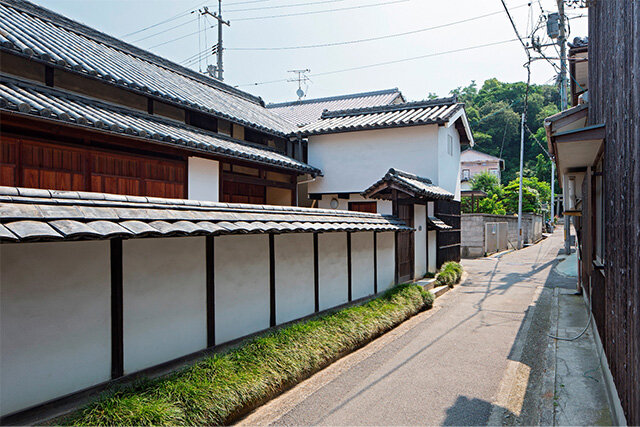
Art House Project
The Art House Project is an art project underway in Naoshima's Honmura district. It began in 1998 with "Kadoya", and currently comprises seven locations: "Kadoya", "Minamidera", "Kinza", "Go'o Shrine", "Ishibashi", "Gokaisho", and "Haisha". In this project, artists take empty houses scattered about residential areas and turn the spaces themselves into works of art, weaving in history and memories of the period when the buildings were lived in and used. Going from one of the houses to another, visitors pass through the Honmura district, where everyday life unfolds around them, in the process not only engaging with works of art but also sensing the layers of time and history interwoven in the community and the fabric of local people's lives. A notable feature of the Art House Project is that because viewing it means traversing a zone of daily life, it acts as a catalyst for interaction between visitors and local residents, giving rise to many a memorable episode. A truly organic project that changes day-to-day, it has evolved to present a new model of community, characterized by positive interaction between urban and rural, young and old, residents, and visitors.
Hours & Admission
- Hours:
- 〇Kadoya, Ishibashi, Haisha
10:00 a.m. - 12:00 p.m. / 1:00 p.m. - 4:30 p.m.
〇Go'o Shrine, Gokaisho
10:00 a.m. - 1:00 p.m. / 2:00 p.m. - 4:30 p.m.
〇Minamidera
10:00 a.m. - 4:30 p.m. (Last admittance 4:05 p.m.)
〇Kinza
【March 1 - September 30】
10:30 a.m. - 1:00 p.m. / 2:30 p.m. - 4:30 p.m.
【October 1 - last day of February】
10:00 a.m. - 1:00 p.m. / 2:30 p.m. - 4:00 p.m.
(Last admittance / 15 minutes before closing)
- Closed:
- Mondays
* Open on Mondays for national holidays but closed the next day.
*Please check the open days calendar before visiting (for the irregular opening hours).
Open Days Calendar
- Admission:
- ○Multi - Site Ticket for five art houses, excluding "Minamidera" and "Kinza"
Online Purchase: JPY1,200; On-site Purchase: JPY1,400
* Free admission for children of 15 and under.
○Single - Site Ticket for one art house, excluding "Minamidera" and "Kinza"
Online Purchase: JPY600; On-site Purchase: JPY700
* Free admission for children of 15 and under.
○"Minamidera" (Reservations recommended)
Online Purchase: JPY600; On-site Purchase: JPY700
○"Kinza" (Reservations recommended)
Online Purchase: JPY600; On-site Purchase: JPY700
- Inquiries:
- Contact
Purchase Your Tickets Here(Multi - Site Ticket)
*Advance reservation with date and time required.
*Advance reservation with date and time required.

Honmura Lounge & Archive
Honmura Lounge & Archive was once used as an agricultural cooperative supermarket. Most of the basic architecture was preserved, and space was designed by the architect Ryue Nishizawa. In addition to selling tickets for the Art House Project and related books and goods, it also serves as an information center.
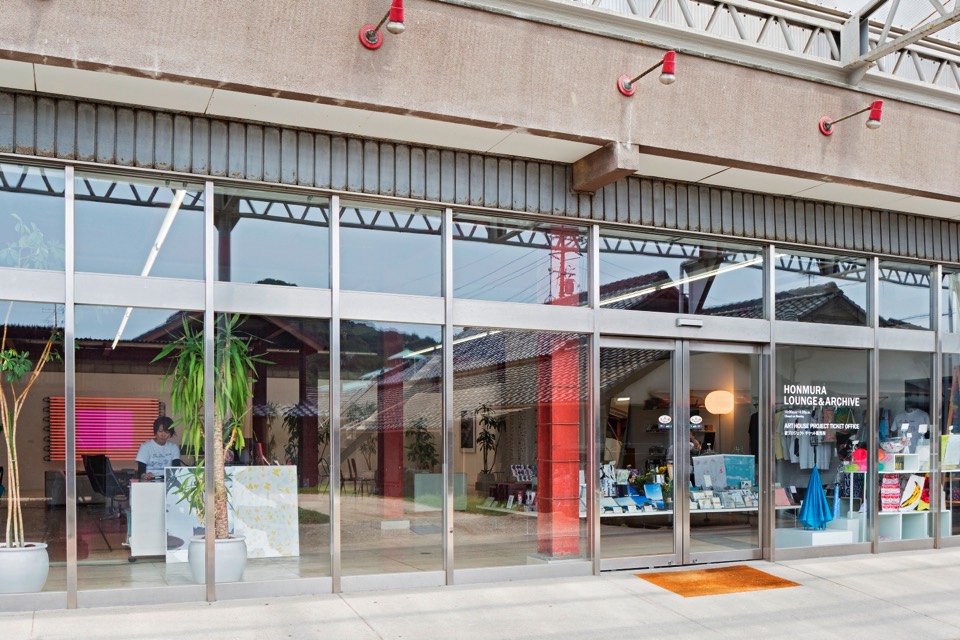
- Hiroshi Sugimoto Go'o Shrine,
- 2002
- Leo Villareal Chasing Rainbow,
- 2004
- Hours:
- 9:30 am - 4:30 pm
- Closed:
- Mondays
* Open on Mondays for national holidays but closed the next day.
- Address:
- 850-2 Naoshima, Kagawa 7613110 Japan
tel +81-(0)87-840-8273
Kadoya
"Kadoya" was the first building in the Art House Project to be completed. The house was constructed roughly 200 years ago, and it was restored to its original appearance with a stucco finish, smoked cedar boards, and traditional roof tiles. The townspeople of Naoshima participated in the creation of the work Sea of Time '98 by Tatsuo Miyajima. This work also served as an opportunity to interject modern art into the lives of the islanders and the local area.
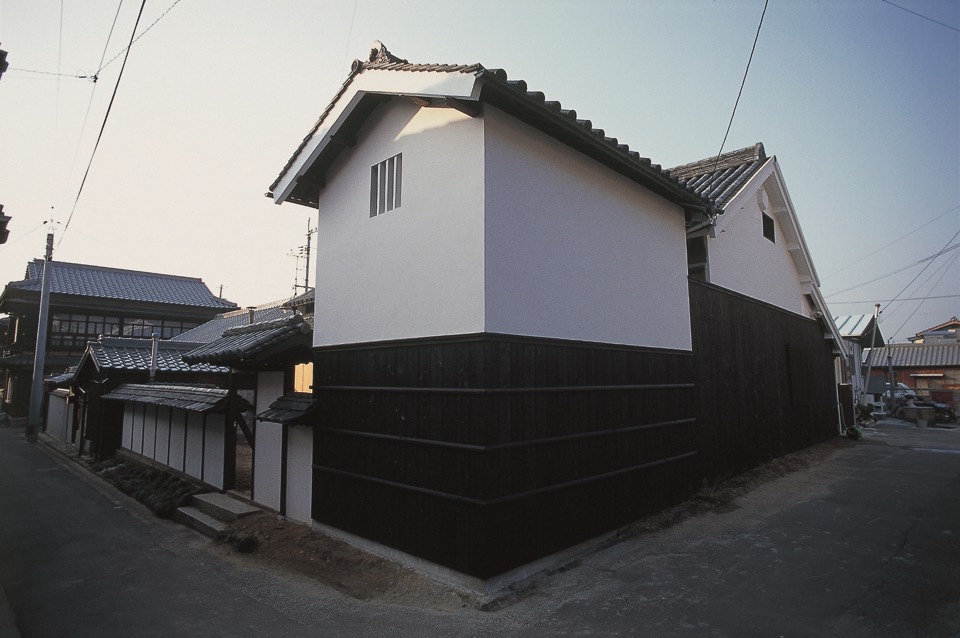
- Tatsuo Miyajima Sea of Time '98,
- 1998 / 2018
- Tatsuo Miyajima Naoshima's Counter Window,
- 1998
- Tatsuo Miyajima Changing Landscape,
- 1999
Tatsuo Miyajima
Born in Tokyo, 1957. MA in painting, Tokyo National University of Fine Arts and Music. Major exhibitions include Venice Biennale Aperto (1988), Big Time (1996, Modern Art Museum of Fort Worth, Texas, exhibited the following year at Hayward Gallery, London), and Art in You (2008, Art Tower Mito, Ibaraki). Contributed to Standard at Benesse Art Site Naoshima in 2001.
Minamidera
"Minamidera" is a new building, and it was designed by Tadao Ando to accommodate the size of the works of James Turrell. The vicinity was once home to five temples and shrines, as well as the ruins of a castle, making it the center of history and culture in Naoshima. The name "Minamidera" (literally "southern temple") seeks to preserve the idea that the temples which once stood here were emotional support for the people.

- James Turrell Backside of the Moon,
- 1999
James Turrell
Born in 1943 in Los Angeles, California. MFA, Claremont Graduate School. Major Turrell exhibitions have been held in 1980 at the Whitney Museum of American Art, New York and in 1995 at Art Tower Mito, Ibaraki. Significant works include the Roden Crater project (1979 to present, Arizona), House of Light (2000, Niigata), and three works introduced in 2004 at Chichu Art Museum: Afrum, Pale Blue together with Open Sky and Open Field.
"Minamidera" is an art facility that can only be accessed by reservation starting from the 1st of October, 2024. Please note the information above when making a reservation and visiting the facility.
Kinza
"Kinza"'s building was once a small house built more than 200 years ago. Major structural elements, such as the roof and pillars, utilize the original traditional techniques, but the structure itself, including the exterior walls, has been turned into a work of art. Rei Naito created a new space by subtly adding to the preexisting connections with time and nature. This work can only be seen by appointment, and only one person may enter at a time to view it.
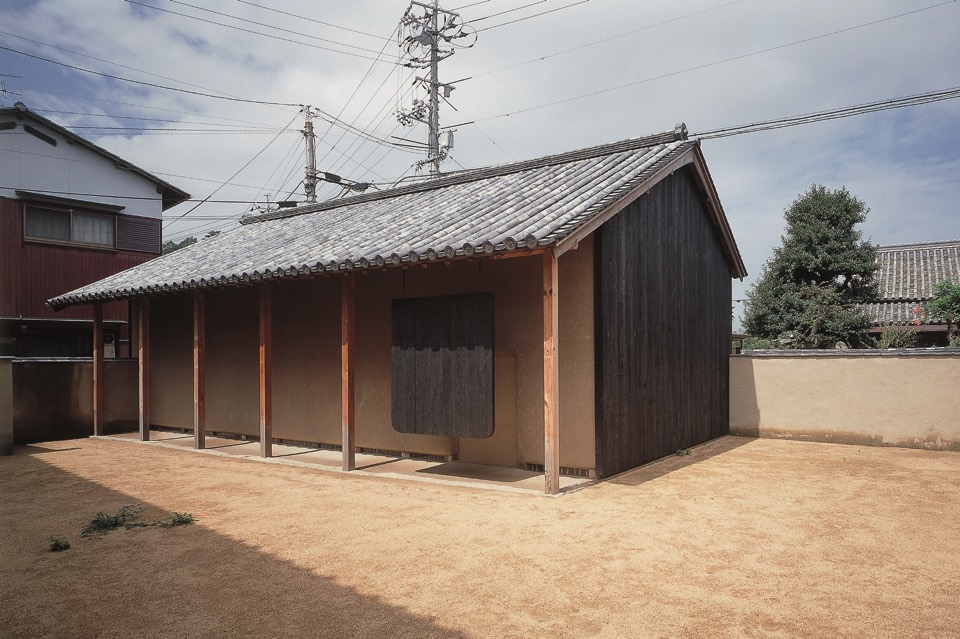
- Rei Naito Being Given ,
- 2001
Working design: Masaru Kimura, Sunao Nagata (Art Station)
Rei Naito
Rei Naito was born in 1961 in Hiroshima. Currently lives and works in Tokyo. In 1985, she graduated from the Musashino Art University, College of Art and Design, Visual Communication Design.
She first came to public recognition with "One Place on The Earth", at Sagacho Exhibit Space, Tokyo in 1991. This led to her being invited to install the same piece within the Japanese Pavilion at the 47h Venice Biennale in 1997. Her work asks us "Is our existence on the Earth a blessing in itself?"
Notable solo exhibitions include "Migoto ni harete otozureru wo mate", The National Museum of Art, Osaka (1995); "Being Called", Karmeliterkloster, Frankfurt am Main (1997); "Tout animal est dans le monde comme de l'eau à l'intérieur de l'eau", The Museum of Modern Art, Kamakura, Kanagawa (2009); "the emotion of belief", Tokyo Metropolitan Teien Art Museum, Tokyo (2014); "the emotion of belief", The Japan Cultural Institute in Paris (2017); "Two Lives", Tel Aviv Museum of Art, Tel Aviv (2017); "on the bright Earth I see you", Contemporary Art Center, Art Tower Mito, Ibaraki (2018) and "Mirror Creation", 21st Century Museum of Contemporary Art, Kanazawa, Ishikawa(2020).
Permanent installations include "Being given" (Kinza, Art House Project, Naoshima, Kagawa, 2001), "Matrix" (Teshima Art Muesum, Teshima, Kagawa, 2010). Awards received include Promising Artists and Scholars of Contemporary Japanese Arts by Japan Arts Foundation, (Installation field, 1994), 1st Asahi Beer Arts Awards by Asahi Beer Arts Foundation (2003), 60th Mainichi Art Prize (2018) and 69th Minister of Education Award for Fine Arts (2019).
- Hours :
- 10:30 am - 1:00 pm / 2:30 pm - 4:30 pm(March 1 - September 30)
10:00 am - 1:00 pm / 2:30 pm - 4:00 pm(October 1 - last day of February)
- Closed :
- Monday to Wednesday(Expect for national holidays)
- Note:
- Can only be seen by appointment, and only one person within 15 minutes may enter at a time to view it.
"Kinza" is an art facility that can only be accessed by reservation.
Please note the information above when making a reservation and visiting the facility.
Go'o Shrine
Hiroshi Sugimoto designed this building to coincide with the restoration of "Go'o Shrine", which dates to the Edo Period. A flight of glass stairs links an underground stone chamber with the main hall, connecting the subterranean and the surface to form a single world. The main hall and worship hall are based on the style of early shrine architecture, such as that of Ise Shrine, as well as the artist's own aesthetic sensibility.
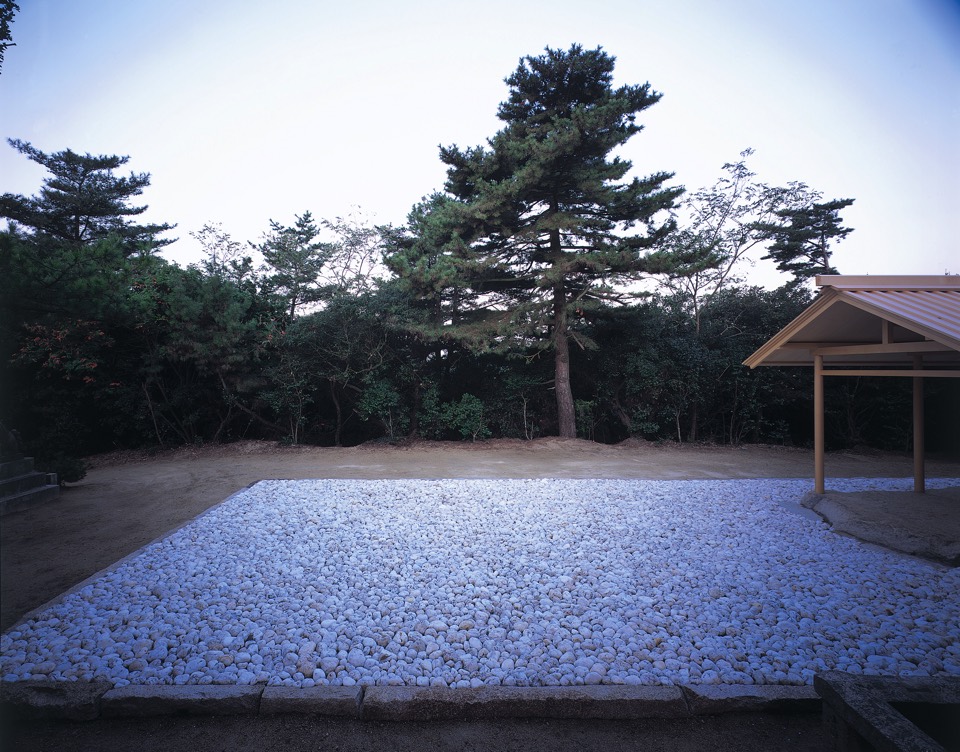
- Hiroshi Sugimoto Appropriate Proportion ,
- 2002
Design collaboration: Masaru Kimura, Toshio Shitara (Art Station)
Hiroshi Sugimoto
Born in Tokyo, 1948. Major exhibitions include Sugimoto (Metropolitan Museum of Art, New York), Hiroshi Sugimoto (Mori Art Museum, Tokyo), and traveling exhibits at other sites from 1995 to 1998, as well as History of History (21st Century Museum of Contemporary Art, Kanazawa), which was also presented at the National Museum of Art, Osaka in 2008 and 2009. At Benesse Art Site Naoshima, Mr. Sugimoto has contributed to Out of Bounds: Contemporary Art in Seascape (1994, Tokyo), Standard (2001), and Naoshima Standard 2 (2006-2007).
* Visitors are welcome to view and pray at any time at the main and front shrine areas of "Go'o Shrine".
Ishibashi
Formerly the home of the Ishibashi family, who prospered producing salt in the Meiji Period, it was used as a private home until April 2001. The salt-making industry supported the livelihood of people in Naoshima for many years, and restoring the home was considered important to understanding the history and culture of Naoshima. Hiroshi Senju spent five years from the original conception of the idea developing the entire space of this "tangible memory" into a work of art.
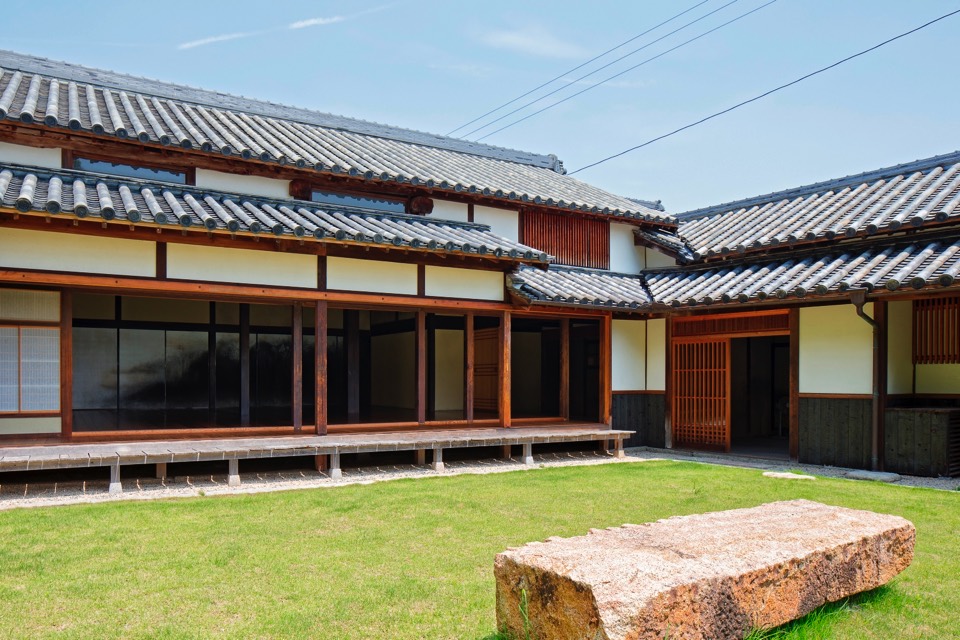
- Hiroshi Senju The Falls ,
- 2006
- Hiroshi Senju The Garden of Kū ,
- 2009
Restoration supervision: Soichiro Fukutake, Tadakatsu Honda
Hiroshi Senju
Born in Tokyo, 1958. Completed coursework of the doctoral program at Tokyo University of the Arts. Honorable mention at the 46th Venice Biennale (1995). Recipient of the 4th Isamu Noguchi Award, following Hiroshi Sugimoto, Tadao Ando, and Yoshio Taniguchi. Significant works include the Waterfalls and Cliffs series. Public art by Senju includes fusuma paintings for Daitokuji-Jukoin Temple and Kongobuji Temple. Senju's works have been collected and permanently exhibited in major museums, including the Metropolitan Museum of Art, New York and Victoria & Albert Museum, London. Recipient of the Japan Art Academy Prize and the Imperial Prize, and currently a member of the Japan Art Academy.
Gokaisho
The name "Gokaisho" (literally "place to play go") is derived from the long-ago custom of the islanders gathering here to play the game of go. Yoshihiro Suda converted the structure into an art space, and his work Tree of Spring, inspired by the work Falling Camellia by Hayami Gyoshu, is displayed within. An actual five-colored camellia is planted in the garden, creating a contrastive effect with Suda's camellia inside.

- Yoshihiro Suda Gokaisho,
- 2006
Restoration supervision: Tadakatsu Honda
Yoshihiro Suda
Born in Yamanashi, 1969. BA in graphic design, Tama Art University (1992). Major exhibitions include the Ginza Weed Theory (1993, Tokyo), Yoshihiro Suda (2004, Palais de Tokyo, Paris), and Yoshihiro Suda (2006, Marugame Genichiro-Inokuma Museum of Contemporary Arts, Kagawa). At Benesse Art Site Naoshima, Mr. Suda has contributed to Standard (2001) and Naoshima Standard 2 (2006-2007) and has created the commissioned work, Weeds (2002).
Haisha
"Haisha", meaning "dentist", was once the home and office of a dentist, and Shinro Ohtake converted the entire building into a work of art. The house incorporates an eclectic array of stylistic elements, appearing in some places like a sculpture, in others like a painting, and in still others like a collage or scrapbook. The title of the work, Dreaming Tongue, represents the process of holding something in one's mouth and recalling a dream by retracing the taste and scent.
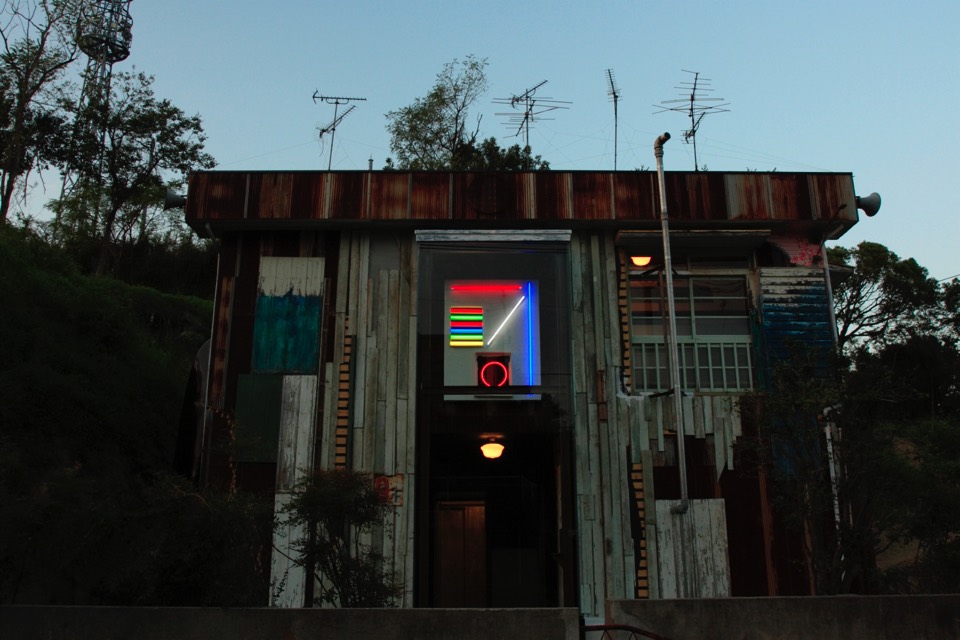
- Shinro Ohtake Dreaming Tongue/BOKKON-NOZOKI,
- 2006
Restoration supervision: Yuji Akimoto, Tadakatsu Honda
Shinro Ohtake
Born in Tokyo in 1955. Began showing his work inside and outside Japan in the early 1980s. Takes part in the 8th Gwangju Biennale (South Korea, 2010), dOCUMENTA 13 (Germany, 2012 ), and the 55th International Art Exhibition Venice Biennale (Italy, 2013). His major works at Benesse Art Site Naoshima are Art House Project "Haisha" (Dreaming Tongue / BOKKON-NOZOKI ) (Naoshima, 2006), Naoshima Bath "I♥湯" (Naohshima, 2009). He also took part in Setouchi Triennale 2013, where he presented MECON (Megijima).
Information
Facilities and Services
The Art House Project is viewed by walking between galleries in various locations. Visitors should first purchase an entrance ticket at Honmura Lounge & Archive.
Payment Methods:
On-site payment methods:
・Cash
・Credit card (VISA / MASTER CARD / JCB / AMERICAN EXPRESS / DINERS / UnionPay)
・Electronic payment (PayPay)
For visitors with babies or small children
- ・Visitors can walk around the island with a baby carriage, but baby carriages may not be taken into the galleries in which the artworks are displayed.
- ・There is one restroom with a changing table in Honmura Lounge & Archive.
For handicapped visitors
(1)Accessibility
Since we have renovated old buildings, some places are not accessible to visitors with disabilities and special needs.
We ask for your understanding.
We will support you as much as possible when you visit us, so please contact and discuss directly with our facilities.
(2)About lending wheelchairs, etc.
・Wheelchairs: We have a wheelchair available at Honmura Lounge & Archive.
・Writing tools: Available.
・Multi-purpose toilets: There are 3 locations in the Honmura district around the Art House Project.
・You may enter our facilities with a service dog, a seeing-eye dog, and/or a hearing assistance dog.
About admission
- ・No discounts are offered for groups and holders of Disability Certificates (Physical Disability Certificates, Rehabilitation Certificates, or Mental Disability Certificates) are not granted free entry.
Requests to visitors
When visiting the museum
- ・Parking spaces are limited. Please use public transport if at all possible.
- ・The galleries are located in residential areas. Please observe good manners and consider the local residents when walking around the island.
- ・Please do not bring large objects (suitcases, umbrellas, tripods, etc.) into the galleries. These should be left at Honmura Lounge & Archive.
- ・Pets may not be taken into the galleries.
- ・The use of cell phones is prohibited on the galleries premises.
- ・Other than in the cafe, visitors may not eat (including candy, gum, boxed lunches, etc.) or drink on the galleries premises.
- ・Visitors may be refused entry if they appear intoxicated or otherwise pose a disturbance to other visitors.
- ・Please take any garbage away with you.
When viewing the artworks
- ・Please do not touch the walls, the glass, or the artworks themselves.
- ・Please do not take photographs, videos, or make sketches in the galleries. Visitors are also requested not to use fountain pens, ink, etc.
About using drone
- ・It's strictly prohibited to operate Unmanned Aircrafts (UAs) /Drone in Benesse Art Site Naoshima premises without our prior permission due to safety assurance reasons for the people, architecture, and artworks.
Contact
Honmura, Naoshima, Kagawa 7613110 Japan
Tel. +81-(0)87-892-3223 (Benesse House)
Fax. +81-(0)87-892-2259
Individuals / Groups

